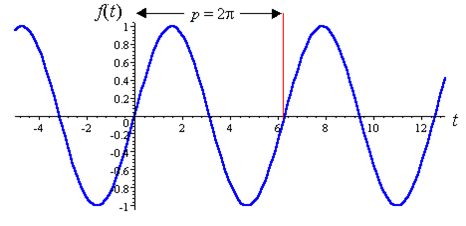DerivativeApplications
4. periodicity
A function f is said to be periodic with a period T if, for some nonzero constant T, we have: f(x + T) = f(x) for all values of x. If there exists a least positive constant T with this property, it is called the prime period. A function with period T will repeat on intervals of length T, and these intervals are sometimes also referred to as periods.
Example: f(x) = sin x, is a periodic function and its prime period is T = 2π
sin (x + 2π) = sin x

Decide if these sentences are true or false:
a) f(x) = |x| is a periodic function
b) f(x) = tan x has T = 2π as prime period
c) f(x) = dec(x) is a periodic function and T = 1 is its prime period
Licensed under the Creative Commons Attribution Non-commercial Share Alike 3.0 License